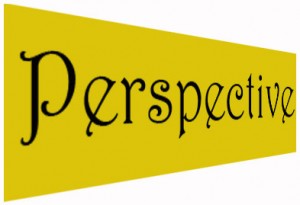 In art, as in life, perspective shapes perceptions and provides context. In writing fiction, early decisions about perspective can profoundly influence the work’s tone as well as readers’ ability to identify with specific characters. One need only compare Gregory Maguire’s derivative tale “Wicked” with L. Frank Baum’s original work “The Wonderful Wizard of Oz,” to get a feeling for the transformative power of a simple change in point of view. In Maguire’s work, the reader gets a behind-the-scenes look at the same events that take place in Baum’s story, but from the perspective of the Baum’s villain, which, as you might imagine, results a tale quite different from Baum’s original.
In art, as in life, perspective shapes perceptions and provides context. In writing fiction, early decisions about perspective can profoundly influence the work’s tone as well as readers’ ability to identify with specific characters. One need only compare Gregory Maguire’s derivative tale “Wicked” with L. Frank Baum’s original work “The Wonderful Wizard of Oz,” to get a feeling for the transformative power of a simple change in point of view. In Maguire’s work, the reader gets a behind-the-scenes look at the same events that take place in Baum’s story, but from the perspective of the Baum’s villain, which, as you might imagine, results a tale quite different from Baum’s original.
Deft use of more subtle changes in point of view can also be used to tweak the relationship between reader and character within a novel. For example, in her debut novel, “A Discovery of Witches,” Deborah Harkness uses first-person narration for the main character, the witch Diana Bishop, but third-person narration in sections written from the perspective of her vampire lover, Matthew Clairmont. This technique effectively strengthens the rapport between the reader and the more ingenuous Diana and at the same time enhances the portrayal of Matthew’s character as more secretive and mysterious. In a more extreme example, George R.R. Martin uses abrupt viewpoint transitions in “Game of Thrones:” each chapter is written from the point of view of a different character. Martin alerts the reader to the nature of the transition by beginning each chapter not with a unique title, but instead with the name of the character whose viewpoint will be used. My draft of “Practical Phrendonics” takes a similar approach, with third-person narration throughout and a point of view that shifts among an ensemble cast from one section to the next.
When I finally read “Game of Thrones” (a reward for completing my draft), I ended up kicking myself a little for not having thought of the chapter-naming trick myself, since it would have considerably simplified the introduction of each new section. I’ve since shifted gears in the Demon of Histlewick Downs. For the first time I’m writing in the first person and it turns out that makes a difference not just for character development, but for plot design as well. The process of writing different sections from the points of view of different characters compels consideration of the circumstances and motivations of those characters in detail. When writing primarily in first-person, however, it’s easy to get lazy about those particulars, and I find myself in the unfamiliar position of having to remind myself to examine situations from characters’ perspectives other than just Flinch’s. Thus, while it may be easier for a reader to relate to a protagonist who is narrated in the first-person, I find it requires more effort to ensure the end product is tightly and convincingly plotted. That’s a trade-off I would never have anticipated without having tried both techniques. I must confess it’s given me a whole new perspective.
I’d be remiss if I didn’t mention the novel use of a cutting-edge point-of-view technique popularized by veteran storyteller Clint Eastwood at last week’s Republican National Convention. While I’ve now tried my hand at both first-person and third-person narration, given Clint’s mixed reviews, I’ve decided, for the time-being at least, that non-person narration is just a little too avant-garde for my taste.
 (0)Dislikes
(0)Dislikes (0)
(0)